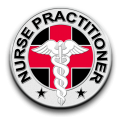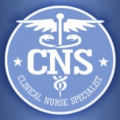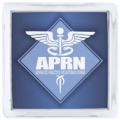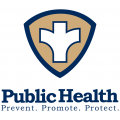For our 2024 rankings, the research team at Nursing Schools Almanac collected data on nearly 3,000 nursing schools and campuses throughout the United States. We evaluated each school on three dimensions:
Search for nursing schools and programs in your state:
The U.S. is home to more than 110,000 nurse practitioners (NPs), and this population is growing at a rapid pace. NP employment is expected to grow by 34 percent over the coming decade, adding 37,000 new jobs in the field. Several factors are driving this increased healthcare demand, including federal health insurance reform and the needs of an aging Baby Boomer generation. Indeed, some nurse practitioners specialize in care for the aged, especially those with chronic and acute conditions. These advanced practice nurses are known as adult-gerontology nurse practitioners.
With a population of more than 110,000, nurse practitioners (NPs) are the largest group of advanced practice registered nurses (APRNs) in the United States. They work primarily in physicians’ offices and hospitals, where they collaborate with other health professionals to provide the best primary and specialty advanced nursing care to patients. Because they are registered nurses (RNs), nurse practitioners can perform the full range of RN responsibilities.
Clinical nurse specialist (CNS) is a type of advanced practice registered nurse (APRN). The CNS provides direct patient care within a population-specific practice such as pediatrics, geriatrics, oncology, or orthopedics. Clinical nurse specialists partner with individual healthcare teams to improve their patient care. They also work at the system or organizational level to improve the quality of nursing care throughout a facility related to their specialty. Some CNSs have a doctorate degree, which allows them to conduct research.
Nurse anesthetists, also known as certified registered nurse anesthetists (CRNAs), are the highest-paid professionals in the nursing field. They earn a median annual salary of $150,000. The top 25% of CRNAs are paid more than $180,000 per year. Salaries are high because the work of nurse anesthetists is delicate and the required skill set is broad. Qualified CRNAs are thus in high demand. The Bureau of Labor Statistics expects employment growth of 25 percent over the next decade, increasing the nurse anesthetist population from 35,000 to 44,000.
Nurse midwife is one of four advanced practice registered nurse (APRN) specializations. Also known as a certified nurse midwife (CNM) or certified midwife (CM), the nurse midwife is a primary care provider for women and newborns. She cares for women during labor and delivery, and she provides gynecological exams, prenatal care, and family planning services. Midwives also offer wellness care for mothers and newborns, and they diagnose and treat sexual or reproductive health issues for patients’ partners.
Nurse practitioners (NPs), nurse anesthetists, nurse midwives, and clinical nurse specialists are collectively known as advanced practice registered nurses (APRNs). According to the Bureau of Labor Statistics, almost half of these healthcare professionals work in physicians’ offices. Close to 30 percent of APRNs are employed at hospitals. The remainder work at outpatient care centers, postsecondary schools, and offices of other health practitioners.
Wound, ostomy, and continence (WOC) nurses specialize in three patient afflictions: (1) wounds resulting from injury, disease, or medical treatment; (2) ostomies, which are artificial openings created during operations like a colostomy, ileostomy, or gastrostomy; and (3) urinary and fecal incontinence, including any associated skin conditions. Nurses in this tri-specialty area are often members of acute care teams in hospitals. Some also work in long-term care facilities or home healthcare settings.
School nurses are registered nurses (RNs) responsible for treating students that become ill or sustain injuries during the school day. They are employed at all levels of education from elementary to college. School nurses can take vital signs, administer medications or first aid, record symptoms, and coordinate referrals to a healthcare provider. They treat staff members, perform health screenings, and oversee school health policies and programs.
Public health nurses are registered nurses (RNs) that specialize in promoting the health of entire populations, rather than one patient at a time. Public health nurses accomplish this by deploying knowledge in the nursing, social, and public health sciences. They identify individuals, families, and subpopulations who would benefit from health promotion or who are at risk of disability, injury, illness, or premature death.
A psychiatric-mental health nurse (PMHN) fills a specialist role within the practice of registered nursing (RN). These focused RNs work with patients, families, and communities to assess their mental health needs. PMHNs diagnose mental illness, develop treatment plans, and educate a patient’s family about the illness and the best approaches for coping. They also implement the nursing process and frequently evaluate it for efficacy. PMHNs work in mental health clinics, university health centers, correctional facilities, rescue missions, and substance abuse centers.















